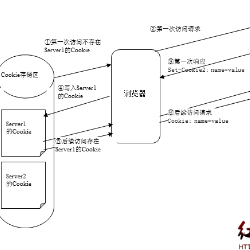Over the past years, advertisement companies have used a variety of tracking methods to persistently track users across the web. Such tracking methods usually include (first-party) cookies, third-party cookies, cookie synchronisation, as well as a variety of fingerprinting mechanisms. To complement these tracking approaches, Facebook recently introduced a new tracking method that attaches a one-time tag as a URL parameter (namely FBCLID) on outgoing links to other websites. Although one-time tags do not seem to have enough information to persistently track users, we demonstrate that this tag, despite its ephemeral nature, when combined with Facebook Pixel, can aid in persistent tracking of users across space (i.e., different websites) and time (i.e., both in the past as well as in the future). We show that this tag can be used to track web users' activity in the distant past -- even before those users had a Facebook account. In addition, by combining this tag with cookies that have rolling expiration dates, Facebook can also track users' browsing activities in the far future as well. Our experimental results suggest that more than 20% of the popular websites out there have adopted this technology, and thus can contribute to this kind of user tracking on the web. Our longitudinal study shows that user tracking can go as back as 2015, or even as 2013 (when the precursor of this technology was first introduced by Facebook). To put it simply, if a user creates for the first time a Facebook account today, Facebook could track her web browsing activity as far back as 2015.
翻译:过去几年来,广告公司使用各种跟踪方法来持续跟踪网络用户。这种跟踪方法通常包括(第一党)饼干、第三方饼干、饼干同步以及各种指纹机制。为了补充这些跟踪方法,Facebook最近引入了一种新的跟踪方法,将一次性标签附加为与其他网站的离网链接上的URL参数(即FBCLID ) 。尽管一次性标签似乎没有足够的信息来持续跟踪用户。尽管一次性标签似乎没有足够信息,但我们证明,尽管该标签与Facebook Pixel 结合时具有短暂性质,但通常可以帮助持续跟踪空间(即,第三方饼干)、第三方饼干同步以及各种指纹机制的用户。为了补充这些跟踪方法,Facebook最近采用了一种新的跟踪方法,在离线链接到其他网站的链接链接中将一次性标签附加为 URL(即FBCLID ) 。 尽管一次性标签似乎没有足够信息可以持续跟踪用户,但我们的标签也可以跟踪用户未来远处的活动。 我们的实验结果表明,即使超过20%的用户在2015年的网络上, 也能够对这个网络进行长期跟踪。




